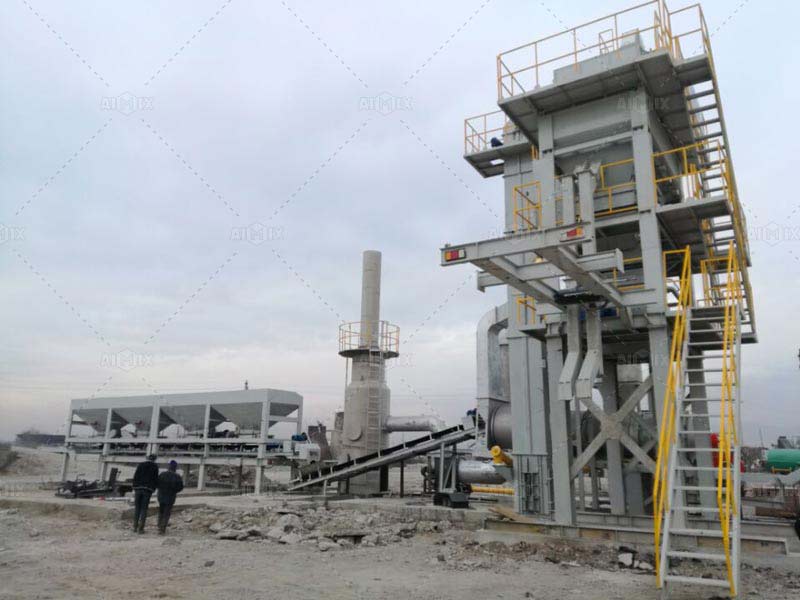As infrastructure projects expand into remote or mountainous areas, the demand for adaptable and safe equipment grows. The mobile asphalt plant has become a crucial asset in these environments, offering flexibility and faster setup compared to fixed plants. However, working on uneven ground, steep slopes, or limited-access zones introduces new safety challenges. This article outlines key strategies to ensure safe and efficient operation of asphalt plants—especially drum mix asphalt plant and mini asphalt plant types—on complex terrain.
Assessing Terrain and Site Conditions
Initial Risk Mapping
Before setting up any asphalt plant on rugged or remote ground, a thorough risk assessment of the site is essential. This includes identifying slope gradients, drainage patterns, loose soil zones, and potential landslide or flood risks. Mapping out these hazards ensures proper placement of the mobile asphalt plant(planta de asfalto movil) and reduces the chance of equipment instability or ground failure.
Soil and Load-Bearing Capacity Testing
Stability is key for safe asphalt plant operation. Conduct geotechnical tests to determine if the site can support the plant’s weight, especially for larger drum mix asphalt plant models. Reinforced ground foundations or leveling platforms may be needed to ensure long-term structural safety.

Safe Plant Setup and Positioning
Optimal Layout and Orientation
On uneven or sloped terrain, the mobile asphalt plant should be positioned to minimize incline stress on the drum and other key components. Orienting the asphalt plant(planta asfaltos) parallel to natural slopes, rather than perpendicular, can reduce strain on the structure and moving parts.
Use of Stabilizing Supports
Mobile plants are equipped with hydraulic or mechanical legs for leveling. In rough terrain, additional stabilizing elements such as cribbing blocks, steel plates, or concrete pads should be used to create a stable base. For mini asphalt plant models, even though they are lighter, proper leveling is still essential for safe operation.
Operational Safety Measures
Access Routes and Perimeter Safety
Access roads must be graded and compacted to support the transport of materials and plant components. The perimeter around the plant should be clearly marked, fenced, or barricaded to keep unauthorized personnel out of danger zones, especially during mixing and fuel handling operations.
Real-Time Monitoring Systems
Modern mobile asphalt plant setups include digital monitoring systems that display real-time data on temperatures, fuel flow, material feed rates, and system pressure. These systems are critical in difficult environments where manual checks are more challenging or dangerous.
Emergency Response Planning
Remote or mountainous sites are harder to access in emergencies. Teams must be trained in first aid, equipment shutdown procedures, and fire response. Each site should have a dedicated emergency plan, including communication protocols, evacuation routes, and onsite safety kits.
Adaptations for Drum Mix and Mini Asphalt Plants
Drum Mix Plants: Heat and Fuel Management
In drum mix asphalt plant(planta de asfalto continua y discontinua) systems, managing heat and fuel flow is critical—especially in high-altitude or windy regions. Enclosing burners or using wind barriers can prevent heat loss and reduce fire risks. Fuel tanks should be grounded and kept at safe distances from ignition sources.
Mini Asphalt Plants: Simplified Setup, Same Precautions
Mini asphalt plant units are ideal for tight or difficult spaces due to their compact size and ease of transport. However, safety procedures such as leveling, grounding, ventilation, and protective gear use remain just as important. Lightweight does not mean risk-free.
Environmental and Weather Considerations
Rain, Snow, and Soil Stability
Heavy rain or snow can lead to soil shifting, water accumulation, or mudslides. Sites must include drainage plans and use barriers or trenches to divert water away from the plant. Mixing operations should be paused during intense weather conditions to avoid operational hazards.
Wind and Dust Control
High wind areas require dust control measures like water spray systems, enclosed conveyors, or windshields around the plant. Not only does this improve air quality and visibility, but it also reduces health hazards for onsite personnel.

Training and Personnel Safety
Localized Operator Training
Operators must be trained for site-specific challenges, such as uneven ground procedures, localized weather response, and communication during isolation. This is especially important in Latin American regions with widely varying conditions across provinces and elevations.
Routine Safety Inspections
Daily safety checks should be conducted on structural integrity, tie-downs, power systems, and fire extinguishers. For mobile and mini asphalt plant(mini planta asfalto) setups, these inspections are especially important during and after any site relocation or severe weather event.
Conclusion: Smart Planning Leads to Safe Production
Working in complex terrain doesn’t mean compromising on safety. With careful site evaluation, proper setup, ongoing monitoring, and customized operational strategies, both large drum mix asphalt plant and compact mini asphalt plant models can operate safely and efficiently. The mobile asphalt plant brings unmatched flexibility to construction teams—especially in Latin America’s diverse topography—but it must be supported by solid safety strategies. By investing in safety from the ground up, contractors can reduce downtime, avoid accidents, and ensure long-term project success even in the most challenging environments.